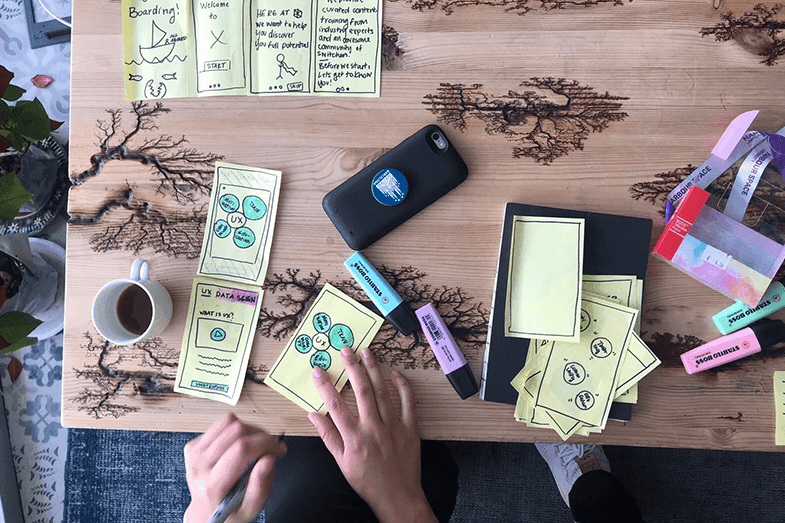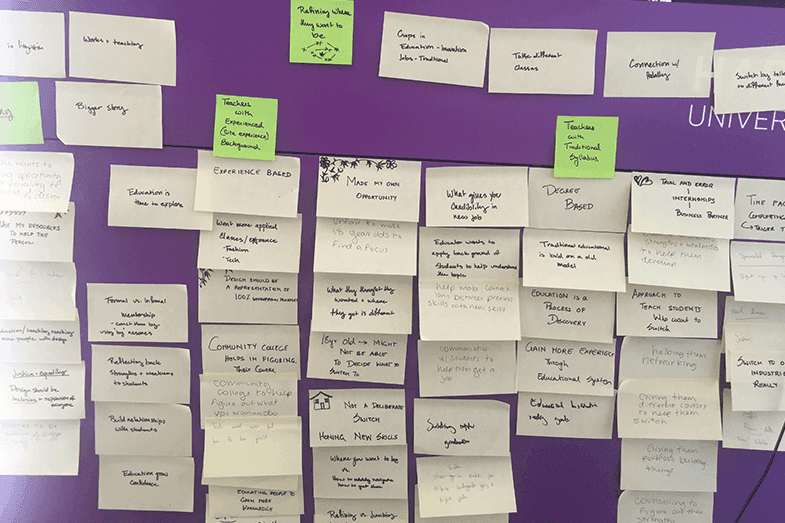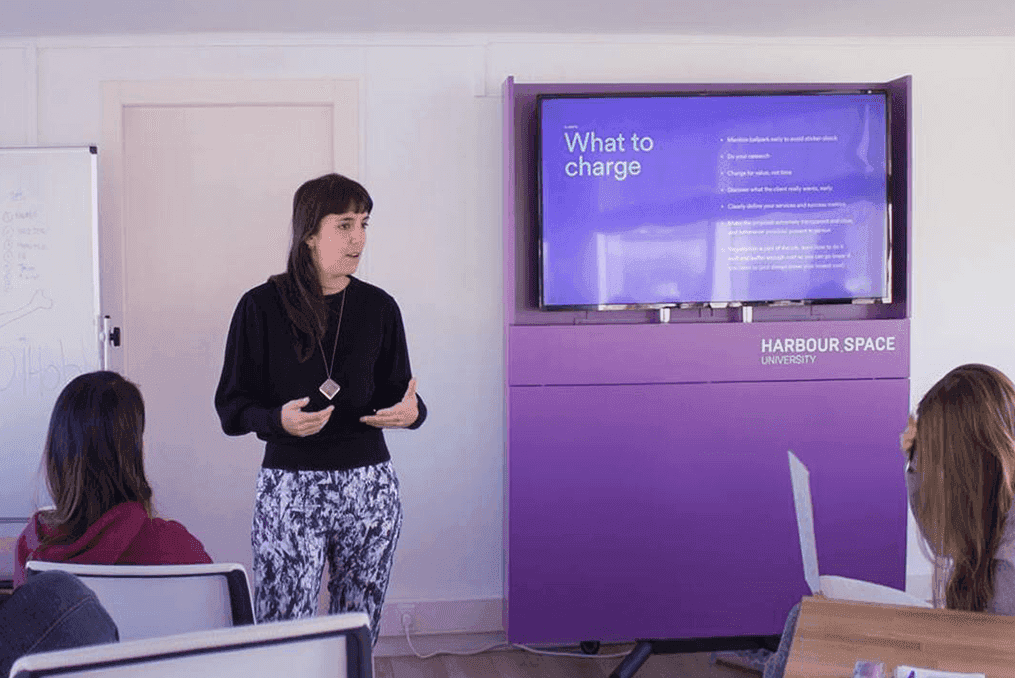UX Designer
Our one-year Interaction Design master program at Harbour Space started with a very pleasant surprise. Gathered with 22 beautiful minds from all sorts of academic and professional backgrounds, we kicked off our first design class.


Writer at Harbour.Space University
Our one-year Interaction Design master program at Harbour Space started with a very pleasant surprise. Gathered with 22 beautiful minds from all sorts of academic and professional backgrounds, we kicked off our first design class.
I come from a fashion design background and I was pleased to discover that I was not the only outsider to the field of Interaction design. Inside this glass-wall classroom overlooking the cloudy Port Vell in Barcelona, Harbour Space was able to bring together so many diverse mentalities and energies around a common passion for design.
The UX design class consisted of a nine-week total immersion in the UX design world. We were impatiently anticipating all the fascinating knowledge and skills Irene Pereyra itself was about to transmit to us. We were particularly excited about this experience with Irene because we felt that it was about to pivot our professional lives.
For those who don’t know Irene, she is the co-founder of Anton & Irene a design agency based in New York. Her agency worked on multiple projects that brilliantly turned very complex information systems like USA Today or Met into delightful experiences.
The first three-week module was a deep-dive into the history, principles, and methods of UX. During this week, we were able to get a bit of background and context to this world some of us were new to.
What Is Ux?
UX or User Experience is the process of designing experiences and products around users’ needs, preferences, and behavior. That includes the actual product along with different parts of branding, design, and usability. Through UX, designers aspire to make the experience delightful to users.
To create meaningful experiences, UX designers need to understand their users more than anything else. In our UX class with Irene, we were able to learn how to get the know our users inside-out. First, we started with a simulation of a client meeting. We were able to understand how to talk to a client and how a typical meeting goes. For designers, this is usually the most challenging part of the job; switching from our right to left part of our brain.
With an overall look at what UX design is and what it aims for, we were able to direct out client meetings the right way and focus on the important parts. Then, we moved to the user-focused part of our projects.

Understanding Users
To me, this was the most interesting and intense part of the class. Understanding customers’ needs and pain points is harder than it looks. Irene introduced Buyer Personas as a method to categorize and have a better sense of users profiles.
To create a buyer persona, we had to collect as much information as possible on our potential customers. That includes demographics, personality traits and most importantly, points of interests and needs. One of our assignments was to chase 50 tourists on the streets of Barcelona with the goal of establishing real connections. We needed them to reveal their goals and struggles as travelers.
After getting to know our audience, we gathered the information, segmented the different characteristics and came up with defined and well-rounded characters. The process was very fun. Our classroom walls were full of colorful post-its. We had intense and very fruitful brainstorms. Most importantly, we deeply understood our audience and how to bring value to their lives.

Post-Its and Sketches
The moment we were all looking forward to has come. The sketching. We jumped to our 6-year old selves and started sketching together our pages and processes. We went through multiple rounds of sketching and iterating. We used our personas to adapt our designs to our users’ reflexes and intentions.
People often assume that you can’t design if you don’t know how to draw. We learned that it’s totally false in Irene’s class. UX design is more about knowing your users and offering them a great experience, rather than drawing.
In our class, a lot of people have no drawing or design background, and yet they were able to do great work in the class. For the next six weeks, we got into a pitch-and-iterate marathon. We were able to perfect our designs and master the art of storytelling through sketching until so it becomes our second nature.
By the end of the class, we were able to convey processes into visually-driven pitch decks. We could build a story around our human-centric design with the goal of mesmerizing our client. Most importantly, we learned how to think critically about digital products, how to give and receive feedback and how to optimize our group dynamics.
What I value the most about this course is how transformative it is on a personal level. With her honest and understanding nature, Irene managed to captivate and motive us to put our best work forward. She trusted us in handling the brief within our teams and mentored us on how to handle situations as diverse as handling a stakeholder interview, establishing a relationship with a client, conducting respectful and effective user interviews and understanding the complex dynamics behind the scenes of running a successful agency.
The energy she brings when entering the room inspires every one of us and turns the entire learning process into an exciting and memorable experience.
If you want to know more about this class and other design classes at Harbour Space , check out the Interaction Design program.
Thanks for reading
If you’re interested in further growth, take a look at our website to learn what your future could look like at Harbour.Space. Lastly, get in touch with us at hello@harbour.space to let us know your thoughts!
